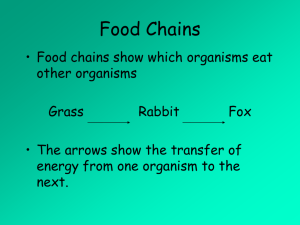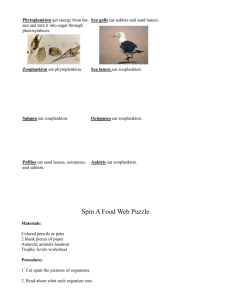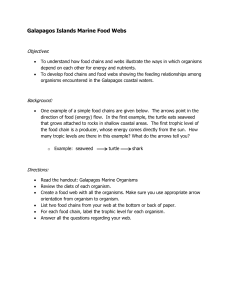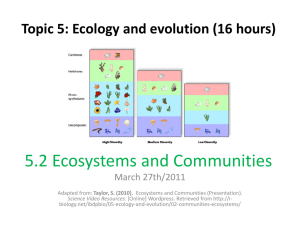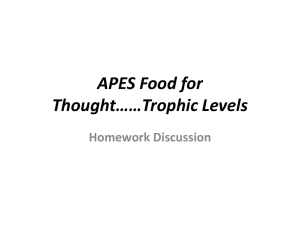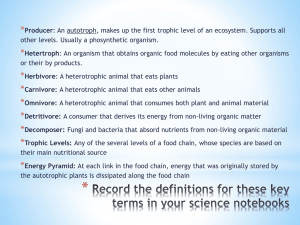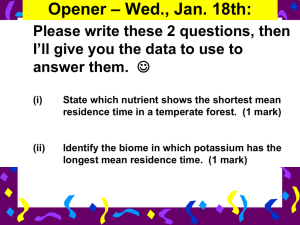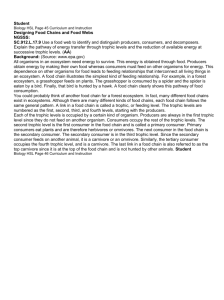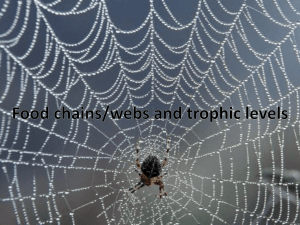Food chains Nemo
advertisement
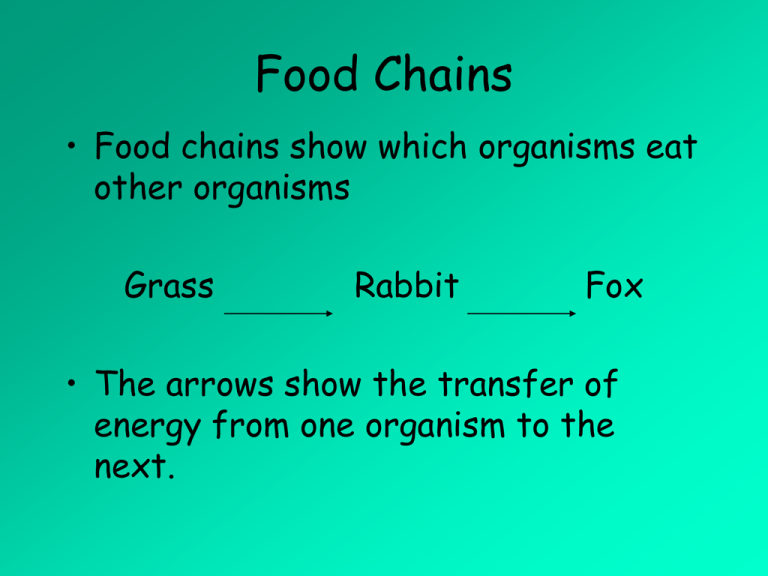
Food Chains • Food chains show which organisms eat other organisms Grass Rabbit Fox • The arrows show the transfer of energy from one organism to the next. • Producers - organisms which can make their own energy from carbon dioxide and water using sunlight for energy (plants) • Primary consumer - organisms which eat producers (herbivores) • Secondary consumers - organisms which eat primary consumers (carnivores) • Tertiary consumers - organisms which eat secondary consumers (carnivores) • Each level of a food chain is known as a trophic level • Food chains always start with a producer. Producers are always on the first trophic level. Food Chains Each level of a food chain is known as a trophic level Tertiary consumer Secondary consumer Primary consumer Producer Barn owl Fourth trophic level Wood mouse Third trophic level Bark beetle Oak Tree Second trophic level First trophic level Food Web Food Web Great Whi te Shark Blue Regal Clown Fish Zooplankton Small Invertebrates Sea Turtle Algae 1. Write down two food chains from this food web. Questions 1. What will happen to the number of clown fish if the sharks become vegetarian? 2. What effect will this have on the number of zooplankton? 3. What will happen to the Blue Regal fish if a disease wipes out the small invertebrates. Food Web Great Whi te Shark Blue Regal Clown Fish Zooplankton Small Invertebrates Algae Sea Turtle Pyramids of Number • Food chains and food webs show the feeding relationships in a community. But they do not tell us how many living organisms are involved. • It takes many plants to feed a herbivore, and many herbivores to feed one carnivore. On the coral reef, there are 25 great white sharks. These 25 sharks feed on 1,100 clown fish. The clown fish feed on 15,000 algae. Can you draw a pyramid of numbers to show this food chain? Use a scale of 1 mm for each 100 organisms to draw the pyramid to scale.
